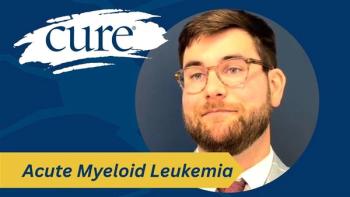
Oral Cancer Surgery and Functional Rehabilitation: Be Positive, But Realistic
Any diagnosis of cancer is frightening, but the functional, psychological and cosmetic effects of oral cancer treatment create an additional layer of fear. Even patients who are treated successfully will require care throughout their lives. This disease exacts an unending physical and mental price.
Any diagnosis of cancer is frightening, but the functional, psychological and cosmetic effects of oral cancer treatment create an additional layer of fear. Even patients who are treated successfully will require care throughout their lives. This disease exacts an unending physical and mental price.
Fortunately, the medical community now takes an integrated approach to oral cancer treatment. A multidisciplinary team of otolaryngologists, surgeons, medical and radiation oncologists, prosthodontists, speech pathologists and therapists, audiologists, nurses, nutritionists, psychologists and social workers develops an individualized treatment plan for each patient. Such plans combine the primary goal of eliminating the cancer with preservation of surrounding organs and consideration of post-treatment quality of life. Medical teams and families also consider the patient’s overall health and lifestyle, as well as the potential side effects of treatment. Although coordinating such a medical team increases the treatment planning time, the decision to skip pre-surgical discussions will negatively impact post-surgical rehabilitation.
Thus, this approach is best implemented at a teaching hospital or a dedicated cancer facility, where patients may also benefit from computer programs that simulate post-surgical appearance, meetings with survivors, before and after photographs of patients, and models of relevant prosthetic devices. Pre-surgical meetings with prosthodontists can result in preventative dental treatment and better preparation for the fitting of post-surgical prostheses.
Surgery’s goal is to remove the tumor and sufficient surrounding tissue so that no tumor cells remain. Although the surgery may succeed in this goal, side effects are numerous and seriously impede quality of life. Patients face lifetime challenges with eating, breathing, sleeping, hearing, speech, vision, upper arm movement, appearance, dental health and mental well-being.
Other treatment options are radiation therapy and chemotherapy. Radiation can be used in place of surgery, or as treatment after surgery if additional cancer cells are found. Before starting radiation therapy, however, the patient and family should meet with a prosthodontist, speech therapist and audiologist, as such treatment can damage teeth, as well as affect speaking and hearing. Chemotherapy, the use of drugs to destroy cancer cells, can be combined with radiation therapy, which may produce a better outcome, but also increases the side effects. In addition, new treatments have emerged, including more successful surgical techniques for flap and bone reconstruction.
Whatever treatment plan is developed, the patient will need follow-up care for a lifetime. Complex reconstruction may occur during the surgical procedure or may require a subsequent surgery. A prosthodontist can fill the gap created by the removal of cancerous bone and tissue with artificial devices or soft-tissue flaps. The most common post-surgical treatment, known as prosthetic rehabilitation, can help maintain function, but is, at best, uncomfortable and requires routine adjustment. Removable prosthetic devices need to be maintained and replaced as wear takes its toll and the patient’s tissues and remaining bone structure change with age. Patients need to maintain these devices daily; they often loosen and detach during wear, and the use of bioadhesives has proved less than optimal. If the patient had poor dental health conditions prior to surgery, it can limit the options available to the prosthodontist. After surgery, consultations with cosmeticians, hair stylists and opticians may teach the patient how to camouflage some of the visible effects.
Other newer treatment options include microvascular free flap tissue transfers, bone grafting, lighter prosthetic materials, improved adhesives, advances in implants, immunotherapy, targeted therapy and an hyperbaric oxygen technology. Major advances have been made in osseointegration, in which natural bone attaches itself to an implant, but patients need to be carefully selected and sometimes the necessary implant sites are not available.
All of this can be overwhelming to the patient and family. Thus, the need for an integrated team approach is highlighted—an approach in which the family has a central contact person who coordinates appointments, explains options and discusses outcomes. In the end, no patient will look or function the same as before the surgery. Such an outcome is unrealistic. Expectations are also relative. What is OK to one person in terms of appearance may not be acceptable to another. People’s tolerance for pain and discomfort vary, as do their abilities to cope with the reactions, sometimes insensitive, sometimes uncontrollably surprised, of others to the changes.
It is a challenge, one my mother met with grace and determination for 33 years, but always with regret about the course of treatment she chose. Be informed about surgery and rehabilitation options; be realistic about expectations and a lifetime of side effects.
Reliable patient information resources abound, including the websites of research hospitals, including the Mayo Clinic, Memorial Sloan Kettering Cancer Center, and the MD Anderson Cancer Center. For a detailed discussion of surgical options, go to





